The other day I received an automated notification that someone had downloaded my mortgage application. A loan application from seven years ago. I thought … hackers. But I took no immediate action. The next day, I received an apology email from the lender saying that my files were fine. The issue was caused by the transition of documents from one system to another.
My passive attitude toward the mortgage email might have been because I get notifications of security breaches all the time. My credit card was cancelled due to the Target store breach. Then again by the Home Depot breach. My medical records were stolen in the Anthem hack(s). My email passwords were compromised. On and on.
I also see notifications of attacks on this site everyday. But unlike my personal information, vcleat.com is uncompromised (I think). What do these hackers want with vcleat.com? To host illegal files? Attack other computers? Acquire vintage shoe secrets? To insert fake shoe articles? Maybe. I can think of a few fakes: “Long Wings Are Ugly and so is Your Dog” – that would be very hurtful and so not true; “Shell Cordovan is Ass Leather” – well, that is actually true. “Pope Francis Shocks World, Endorses Going Sockless” – Oh, the horror.
Until vcleat.com is compromised, I will continue to publish the truth. The truth about shoes. Men’s shoes. Men’s dress shoes. Nothing FAKE here. Today’s truth is about a pair of blue suede and Horned Back Lizard leather cap toe spectators from E.T. Wright.
The pair was in decent shape when I bought them. They were dirty and dusty but with no major problems. The suede was yellowish blue. The lizard leather finish was flaking off in a few areas but in good condition.
I have had a number of readers asking me for advice on restoring vintage suede. My answer has been basically, “good luck”. Sure, I could have regurgitated something I read online but who knows if it is true. And truth be told, I had never restored a vintage suede shoe. Most of the online advice I have read on the topic is similar to what is in this Reddit article, avoid cleaners/conditioners and just use a suede brush and eraser. In general, this has worked well for most of my modern suede shoes. These pairs have been relatively maintenance free. But my vintage shoes were 60 or 70 years old and needed more help.
In my search on advice on vintage suede restoration, I read this suede care article on the Old Leather Shoe. The author recommended cleaning the suede with coconut oil based hair shampoo. His advice made a lot of sense to me – shampoo would clean the suede, the coconut oils would nourish the leather, and doing the process on the entire shoe would avoid staining the suede. And I knew the author wasn’t stretching the truth because he provided example photos for his process.
I started the restore by giving the shoes a good brushing with a suede brush. Then I prepared the shampoo based cleaning and conditioning solution. I used a different coconut oil shampoo than the American Crew shampoo he recommended because I couldn’t find the American Crew product at my local store (yes, I still go to stores to buy things. I am old School. Like my shoes). I dabbed the mixture onto the shoes and thoroughly covered the suede portion of the shoe. I was careful not to get the solution onto the lizard skin and I was also careful not to rub the suede. Dabbing only. This is a photo of the wet shoes.
I dabbed the solution off the shoes and let the pair dry for a couple days. Then I brushed the suede with a suede brush. The suede looked much better. The color was darker and the shoes had lost their yellowish tint. The color was consistent and the suede was without water spots. So far so good.
The lizard skin had a few gouges and the edges were frayed. To cover up the wear, I used a navy blue shoe dye from Lincoln. This dye was left over from my failed attempt to create a blue pair of long wings. Those shoes and photos will never be seen again. And don’t ask.
I used a paint brush to apply the dye to the wear areas. I did not cover the entire lizard skin or put any dye on the suede. The dye really soaked into the leather but also had a bit of a reddish tint. You can see the reddish blue on the back of the heel and the leather edges that I covered with the dye. I wasn’t happy with the red tint, but the lizard skin was looking better.
After the dye, I applied a two rounds of Tarrago Midnight Blue shoe cream over the entire lizard leather sections. I was surprised that the shoe cream mostly removed the reddish tint. The cream really made the lizard leather pop and gave the shoes a nice contrast between the shiny lizard skin and the matte suede.
I finished up the shoes with Lincoln black edge dressing. I also ironed the original(?) blue laces to give them a consistent flat appearance.
And here is the moment of truth, the finished product. I was pleased with the results and I would recommend this suede cleaning method. It was also a fun project since the shoe construction was so different than all the PTBs and long wings that I have restored in past articles. These photos were taken a month after the shoes were cleaned.
If the truth be known, I am not sure what year the shoes were made but they look like a style that was popular in the 1940s. So that’s my guess on their age. Maybe the 1930s. I also wasn’t sure what type of exotic leather they were made from. When I bought the shoes, I thought they were alligator or crocodile in the listing photos. When I received the shoes, the leather didn’t appear similar to any of my other alligator shoes. I did some online research and found an article on the Vintage Shoe Addict’s site covering “Horned Lizard Leather” which looked just like the leather on this pair.
E.T. Wright was once one of the great shoe manufacturers in the USA. They were based in Rockland, Massachusetts. The company patented a pad under the insole called the “Arch Preserver”. Some of the vintage ads said the feature promised to “Keep your feet young”. The Arch Preserver is a raised triangle in the middle of the insole. I couldn’t get a good photo of it but you can find photos of it online. It feels a bit odd at first but you get use to it. Like most US shoe manufacturers, Wright struggled in the 1980s and was eventually acquired by Mason Shoes in November of 1998.
I have bought a number of other vintage suede shoes in the past few years. Now I need to get to the rest of them. Until then, here are a few more photos of this pair.

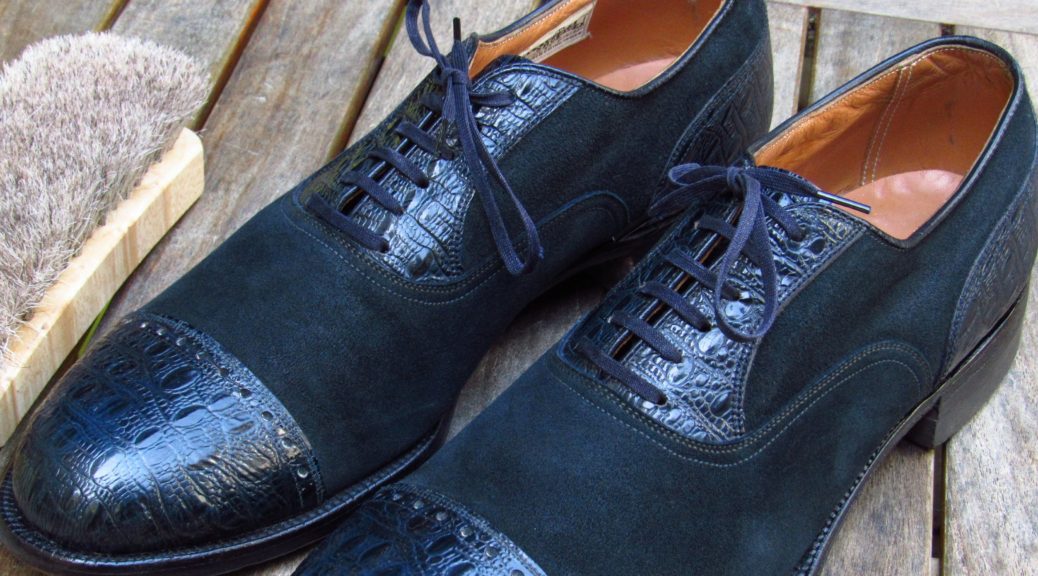
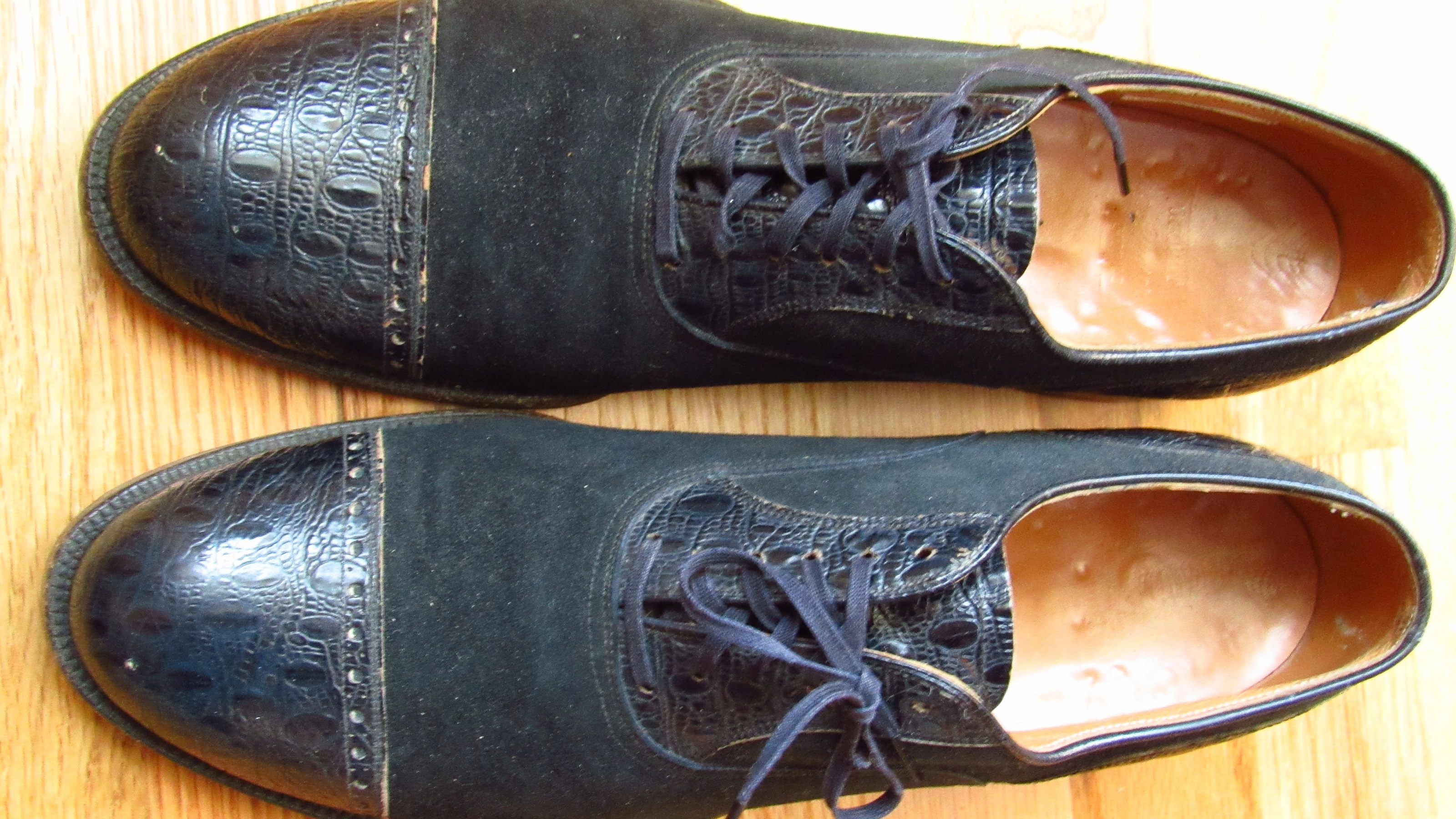

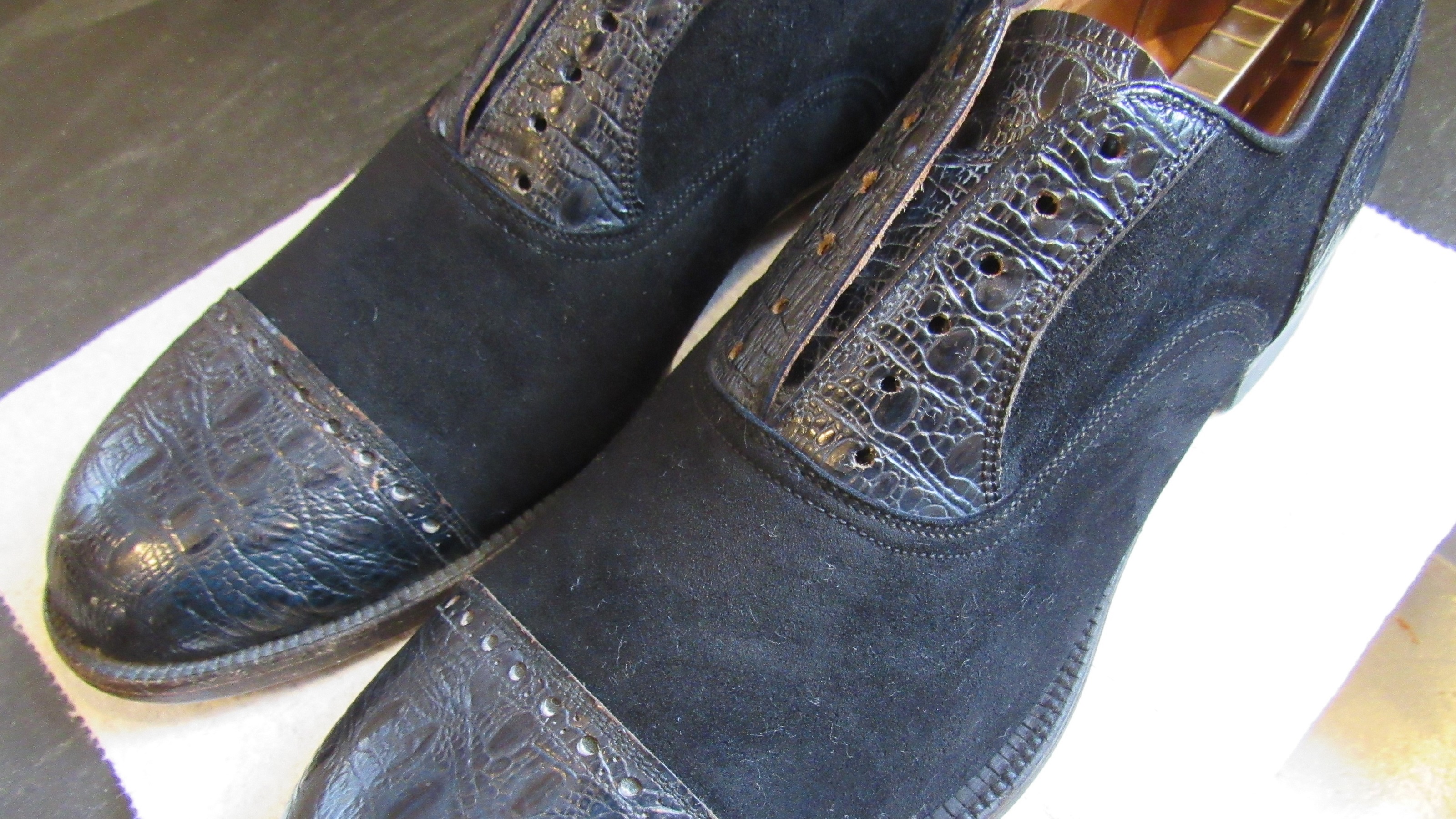
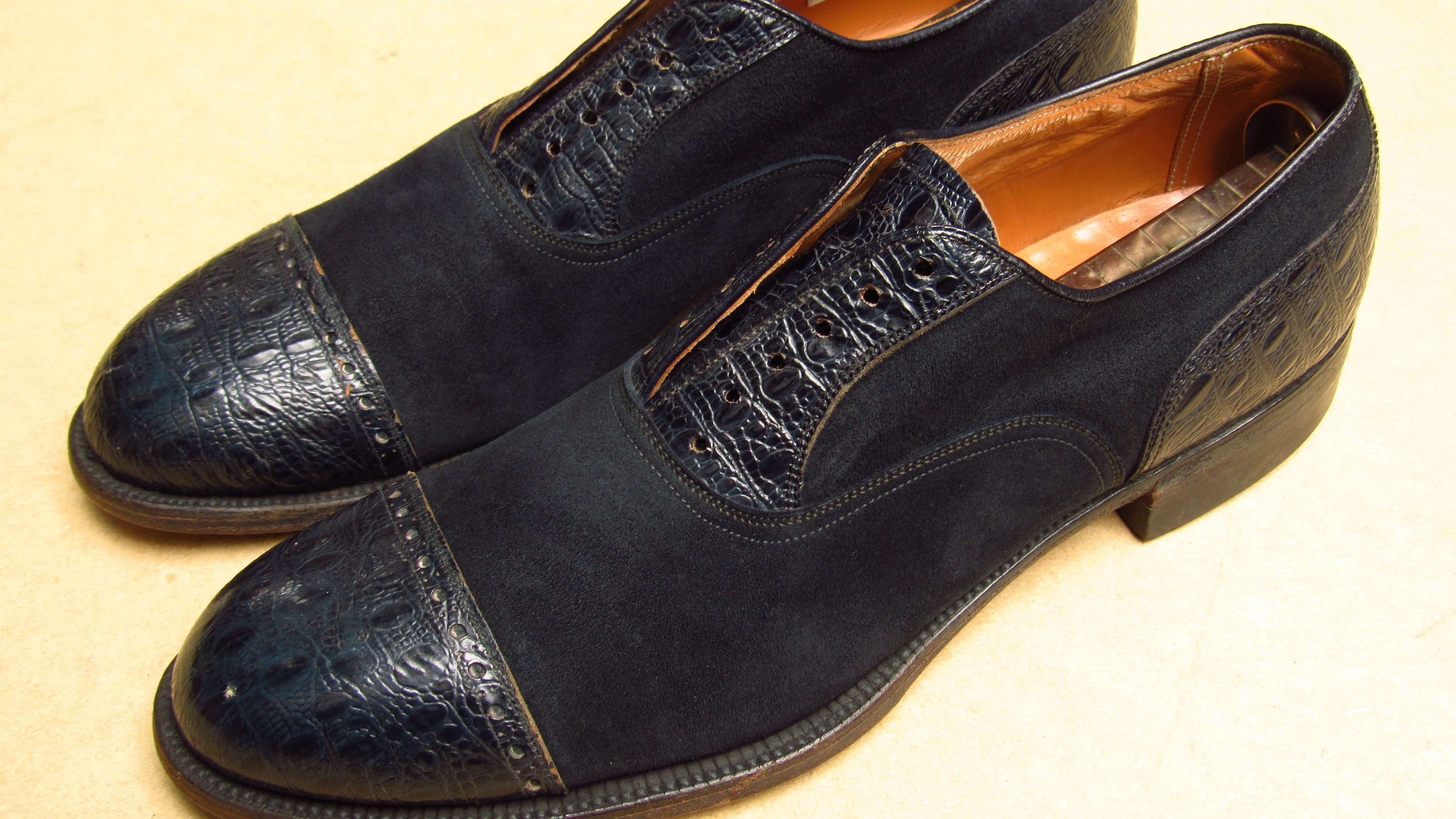
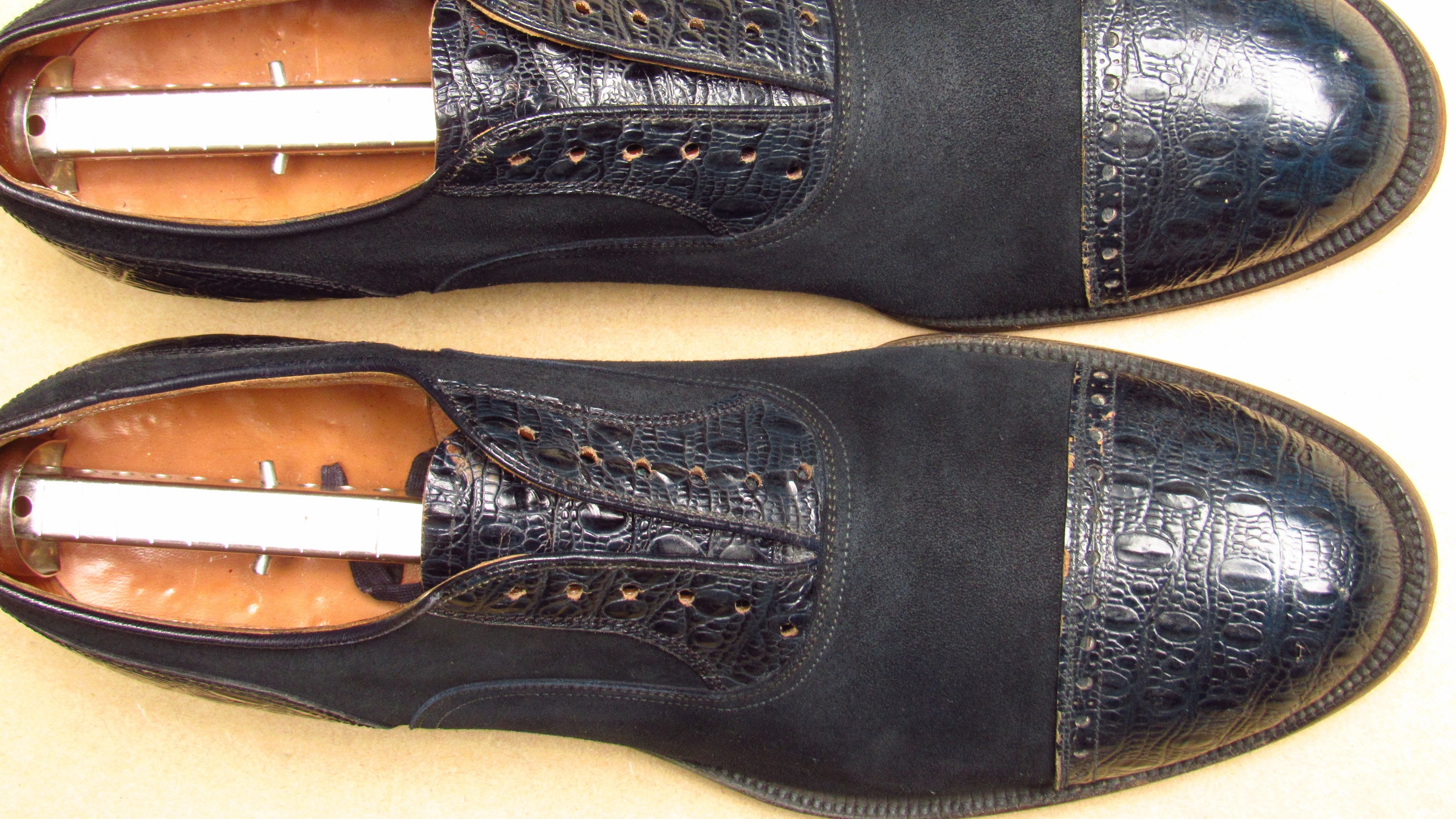
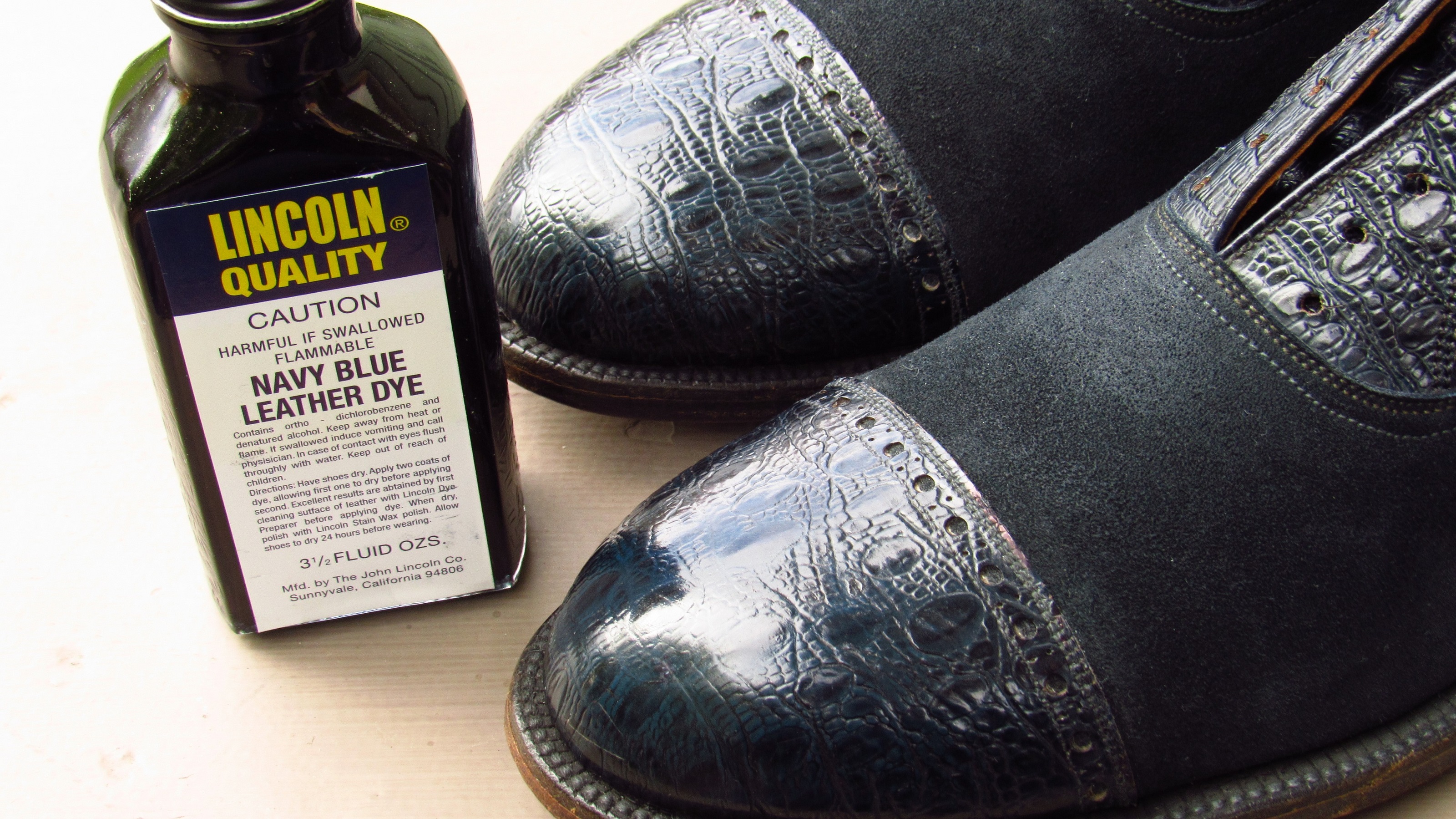













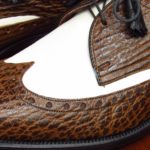
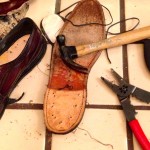


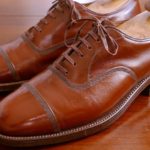
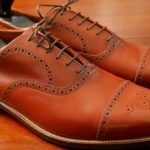

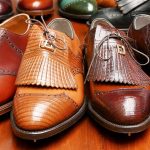
Excellent 🙂
In Japan, importing exotic leather is risky.
Therefore I am envious of you.
Thank you. Is alligator or sharkskin prohibited?
Shark leather is okay.
But Alligator and Lizard are prohibited from import.
Why dabbing only and not rubbing? If you’re cleaning them don’t you have to get right in there?
I did one swipe with the sponge onto the suede and a lot of the blue color came off onto the sponge. So I didn’t do it again. I found that the suede brush loosed the dirt/dust and the sponge picked it up just by dabbing
Hi.
Great pair and great treatment.
I’m gonna try the way you did on my old suede shoes, which are not made of blue suede though.
Thank you
Excellent work David
I once cleaned suede shoes with saddle soup… the result was not good.
Great article. This is the first and only time I’ve seen a E.T. Wright shoe with exotic leather uppers. I only own two pairs of Wright shoes, both holding up well so far despite being Masters Collection. I am eyeing a pair of vintage Arch Preserver LWB that are supposedly union-made. They appear old enough and I really want to give them a cleaning. I suppose what I mean to ask is, do you know of any sources with any information on vintage Wright shoes? If you could provide any details yourself, that’d be great, though that’s asking too much. I figured that if there were any catalogs I should have been able to find them by now? Thank you in advance.
I don’t have any old Wright catalogs. I wish I did though. The long wing pair was likely made in the 60s or 70s.
Bummer. Still no authorities on Wright shoes. I will shoot my shot for those LWBs though. Thanks.